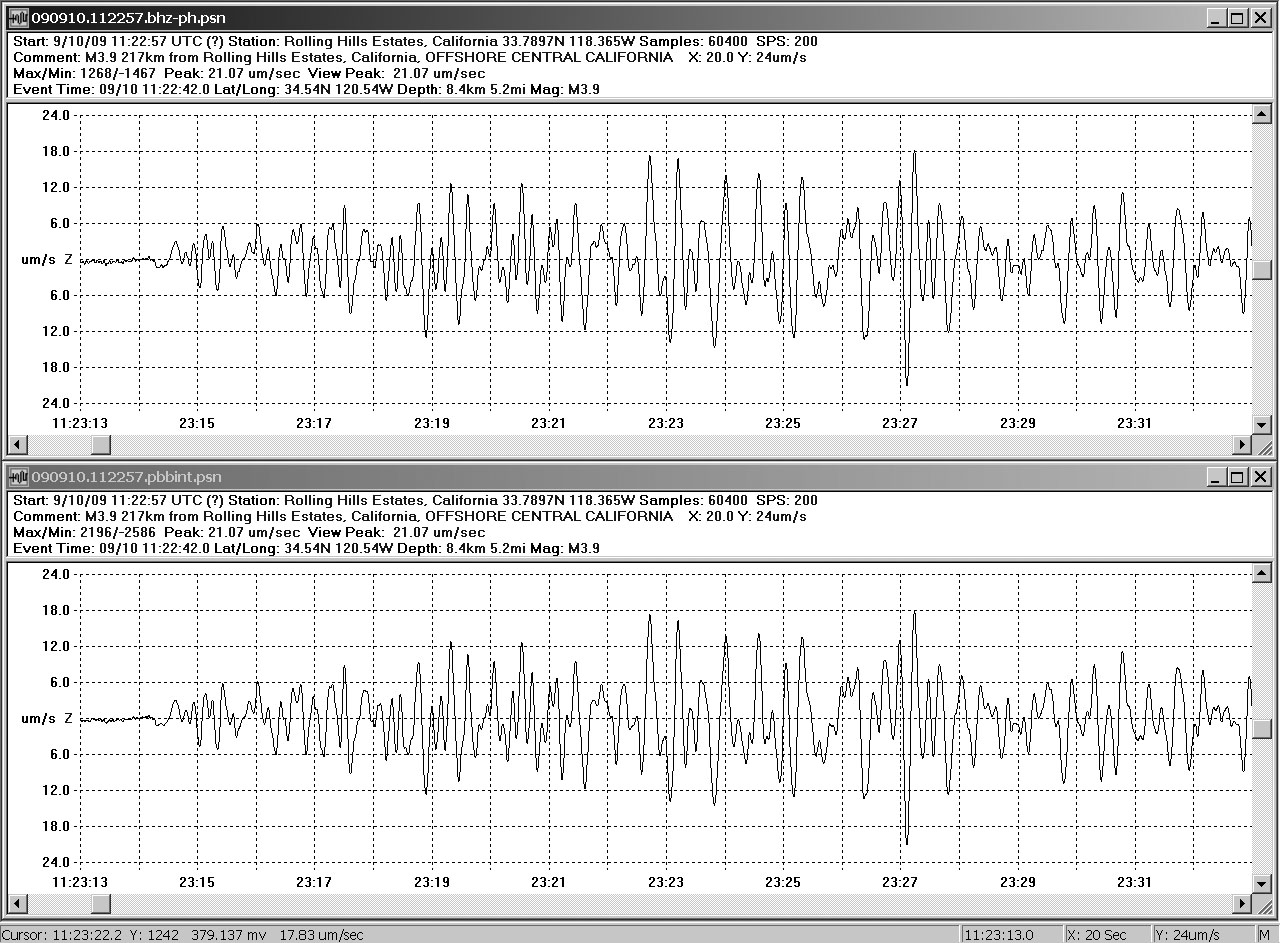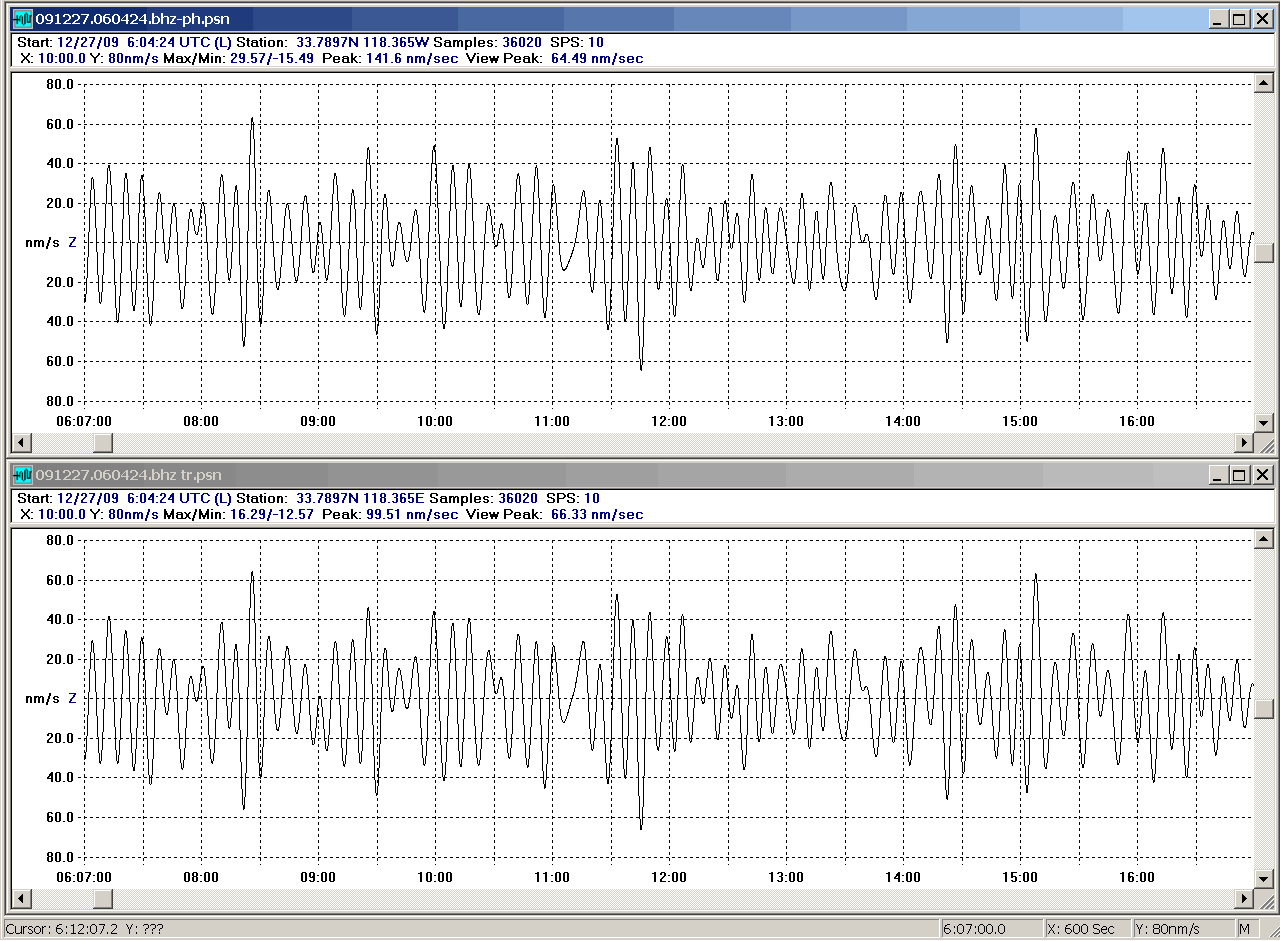Image Captures From the Inyo FBV Broadband Force-Balance Vertical Seismometer
David F. Nelson
Brett M. Nordgren
For more information: Brett Nordgren < >
>
These image files are captured from the high and low gain outputs of an experimental force-balance vertical seismograph, located approximately two miles from the Pacific Ocean and 19 miles from downtown Los Angeles. The instrument is mounted on a concrete pier, which rests on shallow bedrock made up of weathered Miocene marine sediments.
The instrument's high-gain output has a sensitivity of approximately 315 V/cm/sec (31,462 V/m/sec) over a frequency range of 50 seconds to 30 Hz, while the low gain output is 6.29 V/cm/sec (629 V/m/sec) over the same bandwidth. Both outputs clip at a level of 10 Volts, which represents 318μm/sec for the high gain channel and 1.59cm/sec for the low gain one.

The images below are created using differing gain settings and differing low-pass filter settings and are refreshed every 30 minutes.
High gain channel
354nm/sec/line WinSDR Y-scale factor = 1 50sec – 12.5sec (0.08Hz) Clipping level 318μm/sec.
These settings greatly reduce microseisms and cultural noise although they also eliminate higher-frequency local quakes and may mask some phases of teleseisms. However the sensitivity is sufficient to occasionaly display surface waves originating from distant quakes having magnitudes in the high 4's, low 5's. Large quakes will be off screen, although the channel clipping level (10V out) is still 318μm/sec. or 36x this screen height.

Low gain channel
17.7μm/sec/line WinSDR Y-scale factor = 1 50sec – 10Hz Clipping level 1.59 cm/sec
These settings clearly show some cultural noise, which tends to get smaller at night. Higher-frequency local quakes show up well on this display and large teleseisms are also well displayed.

Comparisons
A comparison of the waveforms from 20 second recordings of a local M3.9 filtered 50sec-20Hz.
The upper trace is from the Force Balance Vertical and the lower trace is from a Nanometrics Trillium Compact 120.

A comparison of four instruments displaying 90 minutes of the 8 October, 2009 Santa Cruz Islands M6.2. Upper Left: Ancient Guralp CMG-3. Lower Left: Trillium Compact 120. Upper and Lower Right: Two Force Balance Verticals.

The acid test. A quiet day bandpass filtered 50 sec -12.5 sec. Sensitivity ~5nm/s/count The difference between the two traces is the sum of the instrument noise of the Trillium and the FBV, so it appears that neither can have noise greater than ~5 nm/s in the 0.06Hz band, centered at 0.04Hz.
The upper trace is from the Force Balance Vertical and the lower trace is from a Nanometrics Trillium Compact 120.
